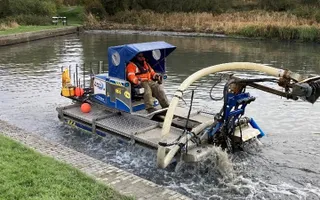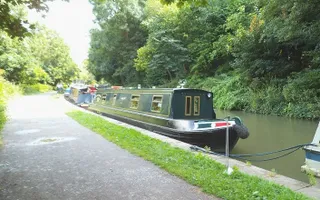Dredging is basically scooping up the sediment from the bottom of the waterways and removing it. As the equipment is cumbersome to move, a significant portion of the cost of the work is to get the tools to site. However, the majority of the cost of dredging comes when we have to dispose of the waste in an environmentally friendly way.
There are two basic categories of dredging. Spot dredging tackles locations we know silt up regularly. Winding holes, bridges and feeder channels are regular offenders.
Main-line dredging is where a continuous stretch of canal/river is dredged. We tend to dredge around three to five miles in one go to make sure we get the best value for the waterway.






